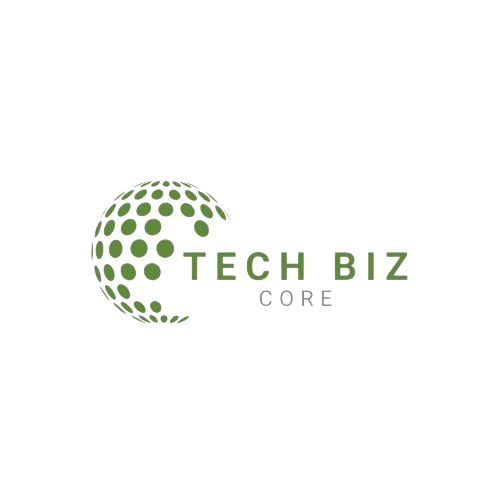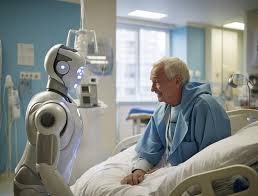Tms treatment apn, Emma was well-known for her contagious laughter and inexhaustible energy, making her the light of the party. But following the birth of her second child, she discovered that she was descending into a profound, unwavering despair. Her days were shrouded in a mist of hopelessness, and even the most straightforward chores seemed impossible. There was little comfort from traditional antidepressants, and therapy sessions seemed pointless and never-ending. Emma learned about Transcranial Magnetic Stimulation (TMS), a potentially effective new treatment, just as hope was beginning to fade.
Emma looked into this novel therapy out of desperation. She learned that TMS, a non-invasive technique that stimulates brain nerve cells with magnetic fields, was producing amazing outcomes for patients who had not responded to traditional therapies. Emma, although skeptical, chose to give it a shot. Her journey, a source of both excitement and fear, was the start of a change she could hardly have imagined.
Emma’s life was transformed by her encounter with TMS, which gave her more happiness and vitality. Like many others, her tale demonstrates the promise of TMS treatment for people with depression, especially those with antidepressant-resistant depression (APN). This article explores the effectiveness of TMS, its science, and what patients might anticipate from this innovative treatment.
Comprehending TMS Therapy
TMS: What is it?
A non-invasive technique called transcranial magnetic stimulation (TMS) stimulates brain nerve cells with magnetic fields. It is mostly used to treat depression, particularly in those people who don’t react well to conventional therapies. In 2008, the FDA gave TMS approval to treat major depressive disorder (MDD).

How Are TMS Operations Performed?
TMS specifically targets brain regions linked to mood regulation. An electromagnetic coil is pressed up against the scalp, close to the forehead, during a treatment. Magnetic pulses produced by the coil enter the skull and cause electrical currents to flow through the brain. These electrical currents may enhance brain-to-brain transmission by stimulating nerve cells.
TMS Types
There are various TMS variations, with different protocols and methods used by each:
The most prevalent type of TMS, known as repetitive TMS (rTMS), uses repeated magnetic pulses.
Deep TMS (dTMS): Uses coils that are specifically made to reach deeper brain areas.
Rapid pulse bursts are delivered by Theta Burst Stimulation (TBS), which may shorten treatment times.
TMS Therapy’s Effectiveness for APN: Clinical Research and Outcomes
TMS has been shown in numerous clinical trials to be effective in treating APN. According to a seminal study that was published in the Journal of Clinical Psychiatry, around half of the patients showed considerable improvement, and 33 percent had a complete remission.
Table 1: TMS’s Clinical Trial Efficacy in Comparison to Conventional Therapies
| Study | Sample Size | Improvement Rate | Remission Rate |
|---|---|---|---|
| Journal of Clinical Psychiatry | 301 | 50% | 33% |
| Biological Psychiatry | 259 | 45% | 30% |
| American Journal of Psychiatry | 375 | 55% | 35% |
Compared to conventional antidepressants and psychotherapy, TMS has the following benefits:
Non-invasive: TMS does not cause seizures or the need for anesthesia, in contrast to Electroconvulsive Therapy (ECT).
Reduced Adverse Effects: Patients mostly report minor headaches and scalp discomfort as their only negative effects.
No Systemic negative Effects: TMS does not cause weight gain or sexual dysfunction, two common systemic negative effects of medicines.
The Process: What to Anticipate
Pre-Medication Evaluation
Prior to beginning TMS, patients go through a comprehensive assessment that includes:
Examining past medical diseases and treatments known as medical history.
Mental Health Assessment: A psychiatrist’s assessment to ascertain whether TMS is appropriate.
The Course of Treatment
- First Mapping: To determine the target area, the patient’s brain mapped during the first session.
- Treatment Sessions: Patients usually go through daily, thirty- to forty-minute sessions for four to six weeks.
- Follow-Up: Schedule routine follow-up visits to assess development and make any required therapy adjustments.
Table 2: Benefits and Risks of a Typical TMS Treatment Schedule
| Week | Sessions per Week | Duration per Session |
|---|---|---|
| 1 | 5 | 30-40 minutes |
| 2 | 5 | 30-40 minutes |
| 3 | 5 | 30-40 minutes |
| 4 | 5 | 30-40 minutes |
| 5 | 5 | 30-40 minutes |
| 6 | 5 | 30-40 minutes |
Advantages of TMS: 1. High Success Rates: Fifty to sixty percent of patients show notable improvement.
- Long-Term Relief: A lot of people get consistent alleviation from their depression symptoms.
- Improved Quality of Life: Mood, energy, and general functioning all improve.
Possible Dangers and Adverse Reactions
Even while TMS usually well tolerated, there several hazards involved:
Frequent side effects include tingling feelings, headaches, and soreness in the scalp.
Extremely uncommon side effects include hearing problems and, if ear protection not worn, seizures.
Contraindications: Not recommended for people who have a history of seizures or specific medical implants.
The Price and Availability
Protection From Insurance
TMS now often covered by insurance for depression, especially when other therapies have failed. Consult your insurance as coverage varies depending on the provider and policy.
Costs of Treatment
TMS can be costly if insurance isn’t available. The average price for a whole course of treatment is between $6,000 and $12,000. On the other hand, some clinics provide financing options or payment plans.
FAQs Regarding TMS Therapy for APN 1.
What is the course of treatment for TMS?
Transcranial Magnetic Stimulation (TMS) a non-invasive technique mostly used to treat depression that stimulates brain nerve cells using magnetic fields.
- How well does TMS work to treat depression that is resistant to antidepressants (APN)?
According to clinical trials, about half of the patients have a considerable improvement, and about one third have a complete remission. - What adverse effects may TMS cause?
Moderate headaches and soreness in the scalp are common adverse effects. Issues with hearing and seizures are examples of uncommon side effects. - What is the average duration of a TMS treatment regimen?
A normal course lasts four to six weeks, with thirty to forty minutes of class each day. - Does TMS have insurance coverage?
TMS for depression often covered by insurance, particularly if other therapies have failed. Each policy and provider has different coverage. - How much does TMS therapy cost if you don’t have insurance?
The average price for a whole course of treatment is between $6,000 and $12,000. Certain clinics provide financial aid or payment plans. - Does TMS have any contraindications?
Those who have a history of seizures or certain medical implants should not use TMS. - What kinds of TMS are there?
Repetitive TMS (rTMS), Deep TMS (dTMS), and Theta Burst Stimulation (TBS) are the three primary forms of TMS. - In what ways does TMS differ from conventional antidepressant therapies?
Weight gain and sexual dysfunction are examples of the systemic side effects of drugs. TMS is non-invasive, has less side effects, and does not have these consequences. - What can I anticipate from a TMS session?
An electromagnetic coil usually placed against the scalp, close to the forehead, during a session. The coil produces magnetic pulses that excite brain nerve cells. Sessions typically last 30 to 40 minutes and held every day for four to six weeks.
Conclusion
TMS treatment offers hope to those who have battled depression resistant to antidepressants and is a major advancement in the field of mental health. TMS is gaining popularity among patients and healthcare professionals due to its high success rates, low side effects, and expanding accessibility. Emma’s experience demonstrates the transformational effect of TMS treatment and highlights the possibility of experiencing joy and a refreshed sense of life.


